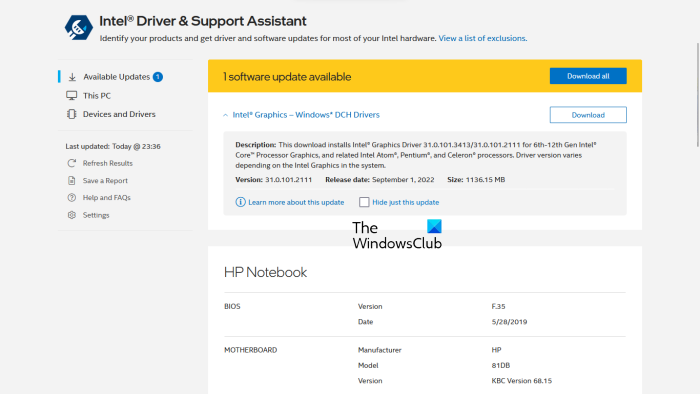If you cannot turn on HDR in Windows 11 or if you see the HDR not supported message while enabling the HDR, the solutions provided in this article will help you. To enable HDR for a particular display, the display must support HDR. You can check this on the manufacturer’s website. According to the users, despite having an HDR-supported display, Windows may display the HDR not supported message, and they cannot turn it on in Windows 11.

Why can’t I enable HDR on my PC?
There are many reasons why you cannot enable HDR on your PC. First of all, check whether your display supports HDR or not. If you have an HDR-capable display, the problem may be with your display drivers or your HDMI cable not working properly. Also, make sure that you are using the latest version of your graphics driver.
HDR not supported and won’t turn on in Windows 11
If you see the HDR not supported message and you cannot turn HDR on in Windows 11, the solutions provided below will help you resolve the issue. Before you proceed, check for Windows updates. For some users, installing the latest Windows update fixed the issue.
- Update your graphics card driver
- Uninstall and reinstall your GPU driver
- Try another HDMI port or check your HDMI cable
- Check for compatibility issues
Let’s see all these fixes in detail.
1] Update your graphics card driver
The main cause of this issue is the outdated graphics card driver. Sometimes, the problem also occurs due to the corrupted graphics card driver. There are many ways to install drivers on Windows. The best method is downloading an update directly from the manufacturer’s website. When you visit your graphics card manufacturer’s website, you must enter your GPU model number to download the drivers. Most manufacturers’ websites have an auto-detection feature for drivers. You can also use this feature.

Alternatively, you can use the dedicated tools for updating the graphics card driver. For example, Intel Driver & Support Assistant helps users keep their graphics card drivers always up to date.
![]()
In the release notes 22.8.1, AMD updated that the OpenGL applications that are 10-bit aware are no longer supported with the HDR display capabilities. The solution to this problem is to disable or turn off the 10-Bit Pixel Format setting for AMD graphics cards. Open AMD settings and go to “Graphics > Advanced and turn off 10-Bit Pixel Format. After that, you should be able to turn on HDR.
2] Uninstall and reinstall your GPU driver
If updating the graphics card driver does not help, uninstall and reinstall it. First, download the latest version of your graphics card driver from the manufacturer’s website. Now, completely uninstall or remove your graphics card driver using the Display Driver Uninstaller (DDU). After uninstalling the driver, run the installer file to install your graphics card driver.
3] Try another HDMI port or check your HDMI cable
If the above two fixes did not help, the problem might be associated with your HDMI cable. If your monitor or TV has two HDMI ports, connect the HDMI cable to another port and see if it helps. If not, check your HDMI cable. If another cable is available, use that cable and see if it works.
4] Check for compatibility issues
Compatibility issues are one of the causes of this problem. It is possible that the HDMI cable you are using does not support HDR. The HDMI 2.0 cable supports HDR 4K resolution. If you want to enable HDR for a higher resolution display, say 8K, HDMI 2.0 cable may not support it. In this case, try HDMI 2.1 cable.
Read: How to check If HDR is supported on a Windows 11 PC.
Can I enable HDR on an unsupported display?
HDR stands for High Dynamic Range. This term is used for displays that render images with deeper contrast and a wide color gamut. HDR displays have a higher brightness level than SDR displays. To enable HDR, the display must support HDR. You cannot enable HDR on an unsupported display. It is mentioned in the display specifications whether it supports HDR or not.
Leave a Reply